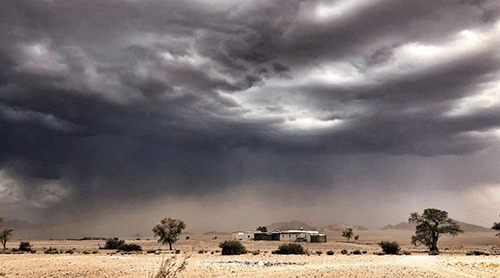Namibia is expected to receive normal to above-normal rainfall for the oncoming rainy season.
This is according to the climate outlook for October 2022 to March 2023 season, issued by the Southern African Regional Climate Outlook Forum (SARCOF).
The outlook predicts better rain prospects for most SADC countries, stating that southern African countries are likely to receive normal to above normal rainfall in addition to an overall good rainfall season.
The seasonal forecast gives hope to farmers, many of whom have been working hard on rebuilding their herds since the devastating 2019 drought.
The best chances for good rainfall are predicted to be between January and March 2023 – a time when Namibia also usually receives its best showers on a good year.
Although the rainfall outlook at the SADC level does not consider all factors influencing climatic variability across regions and farming areas in the country, it provides salient information to farmers and other economic sectors to prepare for a promising rainy season.
The Namibia Meteorological Services is, however, expected to adjust the SADC seasonal outlook to the local climatic conditions and issue the Namibia seasonal outlook.
While the rainfall seasonal outlook is promising, the uneven distribution of rainfall across and within certain production zones remains a downside climate risk.
Farmers are, therefore, encouraged to prepare for a better rainfall season and at the same time urged to continue building their adaptive capacity to climate change through various strategies, such as optimal rangeland management, optimal restocking and farm diversification.
Many farmers AgriToday spoke to welcomed the news, while some received it with a pinch of salt, judging from rain patterns over the past decade.
Felix Murangi, who farms in the Otjinene constituency of the Omaheke region, said good rain prospects raise the hopes of farmers, many of whom are still to recover from the devastating drought of 2019.
“We welcome the news and hope that it shall be as predicted. We are still recovering from the drought of 2019, which robbed us of a lot of animals. It is indeed great news, and we hope that no farmer ever has to face what we faced in 2019 and other years of worse drought,” he said.
Barnabas Tjiriange from Otjombinde is of the opinion that changing farming patterns have made it difficult for farmers to cope, and the absence of rain makes the situation even more difficult.
He said many farmers are still attempting to restock their livestock after many of the livestock died during the 2019 drought.
“Many families were left with no proper means to feed themselves due to that drought. So, we really hope for the better this year to be able to assist some of us who are yet to successfully restock our livestock,” he said.
Meriam Kafita, originally from the Ohangwena region, feels that the good rain prospects will accord her an opportunity to plant most of her rain-fed crops, such as maize, which she was not able to do last year.
“This is good news. We depend on the rain for our crops; without it, we are doomed. And for us, it is not just a matter of planting and harvesting, but a matter of life and death if the rains do not come because we feed ourselves from the crops we plant,” she said.
The much-talked-about drought of 2019 made farming difficult, as it was preceded by several years of scattered rainfall, especially in 2013, which recorded the highest average daily temperatures.
The crippling drought placed huge burdens on food security at the household level across the country, with many farmers feeding hand-to-mouth at the time.
Namibia recorded good rainfall during the last season, with normal to above normal rainfall received in many parts of the country.
The farmers are hoping for a repeat of the same rain patterns for better days.


